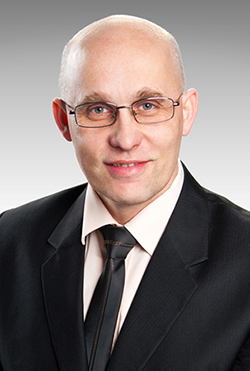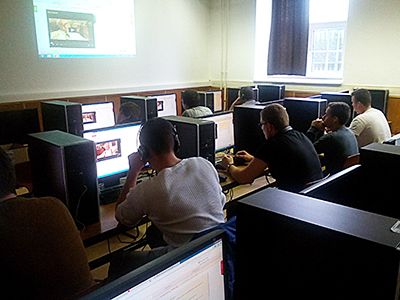
Ferenc Sós
Before taking his students on a tour of Auschwitz-Birkenau State Museum, high school history teacher Ferenc Sós turned to IWitness.
Sós is a graduate of USC Shoah Foundation’s Teaching with Testimony in the 21st Century program in Budapest, which introduces teachers to the methodologies of using testimony from the Visual History Archive in their lessons. He was a member of the 2013 cohort.
He will take his class at Puskás Tivadar Telecommunication Technikum of Budapest, Hungary, on a trip to Auschwitz in a few weeks. But before they go, Sós thought they needed historical, emotional and empathetic preparation for what they would see. So, he assigned his class to complete the Hungarian-language IWitness activity Érkezés Auschwitzba (Arrival in Auschwitz), which introduces students to personal experiences of those who arrived on the ramp at Auschwitz-Birkenau. They explore images from the Auschwitz Album, showing the arrival of Hungarian Jewish men, women and children in 1944, as well as listen to survivors who endured a similar process.
“As Nobel Prize-winning author Imre Kertész says: ‘Auschwitz is not about the Jews and the Nazis, but about what man is capable of,’” Sós said. “The Hungarian-language activity ‘Érkezés Auschwitzba (Arrival in Auschwitz)’ is an excellent educational material for this purpose.”
Sós said he could have had the class watch and analyze a testimony clip as a group, but he wanted them to each complete the activity for themselves. He told them they were going to do something different from a traditional history lesson, and they were very open to it and motivated.
“It is totally different when each and every student interactively works in the same program. Every one of them can answer the questions in the IWitness activity,” Sós said. “This is impossible in a regular lesson even with an otherwise active class.”

“You could feel from what they said the emotional impact of the clip,” Sós said.
He still has fond memories of Teaching with Testimony, Sós said. He had applied on the recommendation of a friend and colleague who had been a member of the first-ever cohort in 2012, and felt it was a privilege to get to immerse himself in the Visual History Archive and hear the stories of Hungarian survivors. He also enjoyed collaborating with the other teachers and exchanging ideas and feedback for each other’s lessons.
If teachers have an interest in history, Teaching with Testimony is the program they must apply for, he said.
However great a teacher is, students today simply learn more from video, images and interactivity than from traditional lectures, Sós said. Testimony allows them to see survivors’ gestures, intonation and their state of mind, and to learn what lessons the survivors want to leave to the world – a big departure from the usual horrific images of the Holocaust that teachers tend to show. Testimony humanizes the survivors for the students and helps them understand the consequences of anti-Semitism.
“They understand that although the Holocaust was an incomprehensible event in the history of Jewish people, indeed, it was one of the most important traumas for humanity and it can never happen again,” he said.